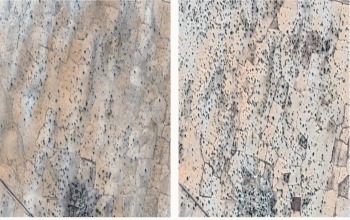There are several schools of thought and opinions on the stratification of crop nutrients under various field management practices. To get a local look at this question, Iowa Corn and the Iowa Soybean Association (ISA) conducted a study in the spring of 2024 on fields that were part of the ISA long-term cover crop trials or Iowa Corn’s Soil Health Partnership trials. Several of the sites examined have been in treatment strips for up to nine years.
Soil Nitrate Study Methodology
Four of the 14 sites were chosen due to their history of consistent cover crop growth and duration (7-9 years) in cover crop trials. All four sites had cover crops seeded in the fall of 2023 and were planted to soybeans in 2024 after having corn there in 2023. Two treatments were compared in this study, including:

Stratified soil sampling was conducted in early April of 2024. Samples were collected before planting at soil depths from 0-24 inches. Soil samples were collected by SoilView and analyzed by Midwest Labs for macro and micronutrients, cation exchange capacity, organic matter and pH. In early June after planting, soil samples were taken by SoilView at soil depths of 0-7 inches and 7-14 inches from the same strips as the earlier sampling. The later samples were analyzed by Midwest Labs for nitrate and ammonium levels. The June sampling was to see if there was a difference in soil nitrogen after the cover crop was terminated.
Soil Nitrate Study Results
Across locations, the results consistently indicated the cover crop treatment significantly reduced soil nitrate levels compared to the no cover crop treatment in early spring because the cover crops were still actively growing and taking up nitrates (left side of Figure 1). These results are consistent with other research that has shown cover crops are effective at scavenging residual nitrogen. The later spring testing results did not show the same pattern in the top seven inches of the soil as the results from early April. However, there was a statistically significant reduction in nitrates in the soil sampled from 7-14 inches (right side of Figure 1). During wet periods like the spring of 2024, cover crops are especially helpful in reducing nitrate from leaching through the soil profile.

Figure 1. Soil nitrate levels for cover crop treatments (blue bars) and no cover crop (gold bars) in early April (left side) and early June (right side).
Organic Matter Study Results
Organic matter content was statistically higher near the soil surface (0-2 inches) in the cover crop treatments compared to the no cover crop treatment (Figure 2). However, when compared at depths greater than 0-2 inches, there was very little difference in the organic matter percentage although organic matter was numerically higher at all depths except 4-7 inches.

Figure 2. Organic matter levels of soils under cover crops (blue bars) and no cover crop (gold bar).
Soil Compaction Study Methodology and Results
In addition to soil nutrients and organic matter, soil compaction was evaluated in mid-May by TerraForm Tillage, two to three days following a soaking rain. Compaction was less in the cover crop treatment across all depths, and the 0-12 inch depths were statistically less compacted when comparing cover crop vs. no cover crop treatments (see Figure 3). Neither treatment had yield-limiting compaction, which is typically classified as greater than 300 pounds per square inch (PSI). The reduced compaction in the cover crop treatments suggests that crop roots will have less resistance when growing in the soil with a history of cover crops.

Figure 3. Soil compaction results in soils with cover crops (blue bars) and no cover crops (gold bars). The * indicates the compaction values are significantly different.
Click here to see more...